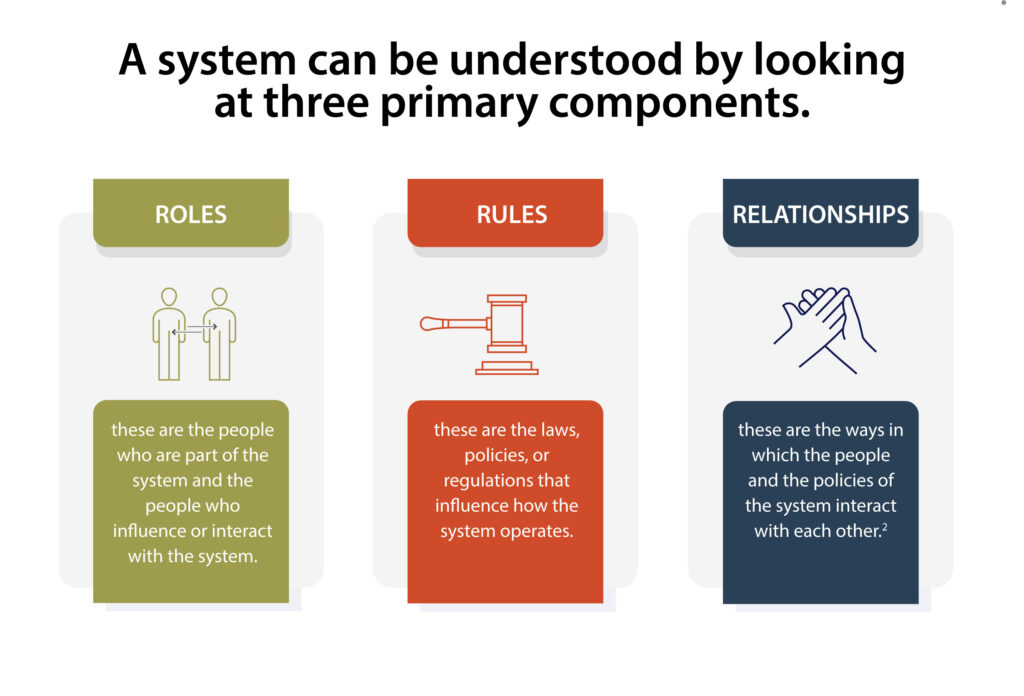Home > Systems Thinking for Prevention Professionals
By Sarah Davis, MNM
Our world is made up of intersecting and interconnected systems. The work of prevention takes place within the context of these systems (think: education system, healthcare, or judicial system). As prevention professionals work to make changes – at the individual, interpersonal, community, and societal levels1 –it is important to understand how systems work, so that we can influence them to ensure everyone can achieve their greatest level of health and wellbeing.

Schools are an example of a system. A school system could be viewed as a single school, a school district, or the U.S. educational system. Defining the “boundaries” of the system helps you to identify the components within the system, and, most importantly, identify leverage points for change.
In this case, let’s take school districts in our community as the system in question. Within the school district, we identify the following:
Gathering an understanding of the Relationships between the people and the policies within the school district provide prevention professionals the opportunity to see how a system functions (i.e., who has influence over what and how policies impact the system’s functioning). Having a systems perspective enables us to see which parts of a system may be supporting health and wellness, and which parts may be inhibiting it. We can identify and prioritize opportunities for change – and see the people who need to be involved and the policies that need to change.
Systems thinking is the art of seeing and leveraging the connections between components within a system. When prevention professionals build their skills in understanding systems, they expand their opportunities to create lasting and meaningful changes that positively impact health and wellness. For example, if behavioral health in schools has been identified as a need, prevention professionals could ask themselves questions such as:
This is just a sampling of questions, but hopefully give you, a prevention professional, an idea of how taking a systems approach to prevention offers the opportunity to make impactful change based on an understanding of the roles, rules, and relationships that exist within a system.
1 To learn more about the Socio-Ecological Framework for Prevention, check out this planning tool from the Great Lakes PTTC: https://pttcnetwork.org/wp-content/uploads/2022/03/Socio-Ecological-Approach-Worksheet_PTTC_Harm-Red._508_kms-FINAL2.pdf
2 This framework of looking at a system is influenced by USAID’s “The 5Rs Framework in the Program Cycle”: https://usaidlearninglab.org/resources/5rs-framework-program-cycle
3 Learn more about Social Emotional Learning from SAMHSA’s Evidence-Based Practices: https://www.samhsa.gov/resource/ebp/casel-guide-schoolwide-sel-essentials